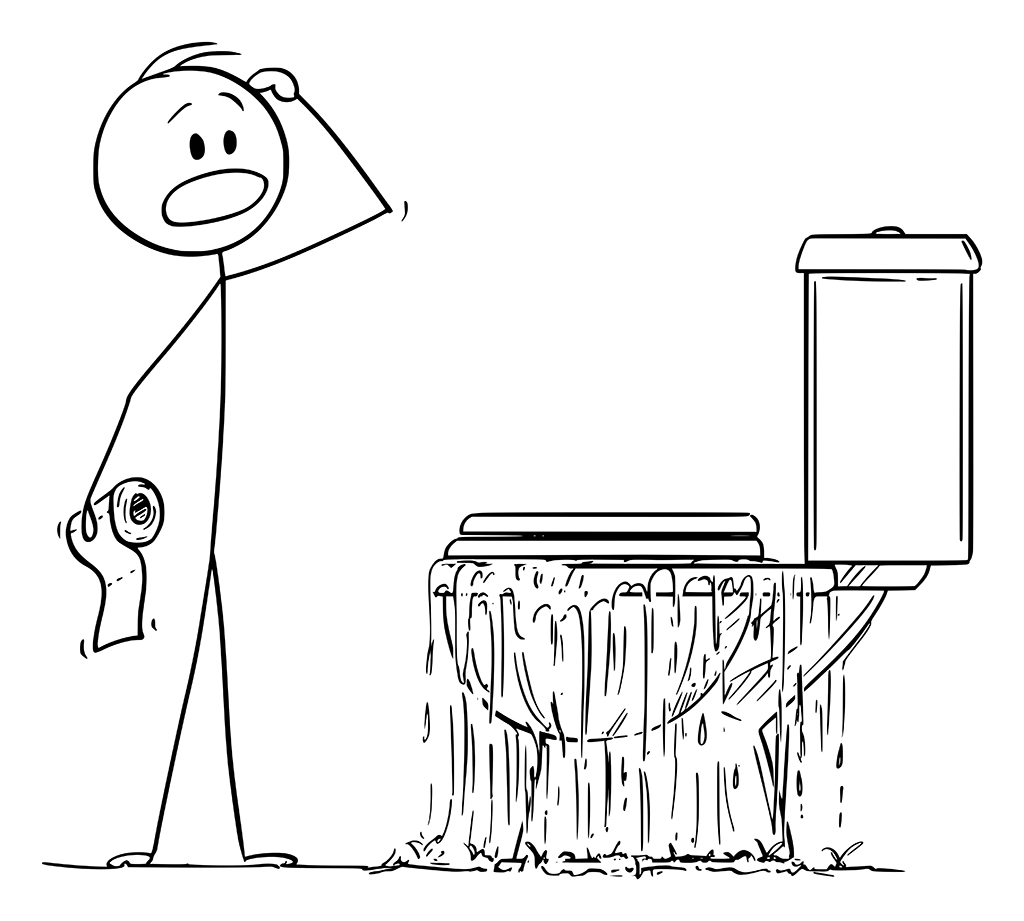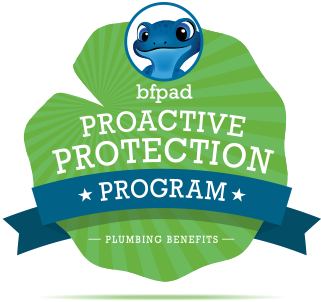
Plumber Tips: How to Stop an Overflowing Toilet | San Antonio, TX
Photo By Zdenek Sasek at istock
While your bathroom is always one of the most important rooms in your home, right now during the Covid-19 crisis it is probably getting more traffic than it ever has in its life. You need to be able to count on your toilet performing but sometimes toilets malfunction. Dealing with an overflowing toilet is never a great situation, even for a trained plumber. Let’s face it, no one wants to find an overflowing toilet. However, there are a few things you can do if your toilet is overflowing to help salvage the situation while you wait for an emergency plumber to show up and fix your toilet.
Locate and Use the Shut Off Valve
If you haven’t located your toilet shut off valve, now is the time to go look in your bathroom and get acquainted. You should know where this valuable valve is before the day that you have sewage waste flowing all over your bathroom floor. The very first thing you need to do if your toilet is overflowing is grab for this valve and turn it off. Turning off the toilet shut off valve stops water from flowing into the toilet, and thus dries out the toilet. As soon as you turn off the valve, call your local San Antonio, TX plumber, and get them in quickly to troubleshoot the problem.
If you don’t know where your shut off valve is, take a look at the pipe that comes out of your toilet and heads towards the bathroom wall. It shouldn’t be too difficult to find. The valve looks like a hand crank, and if an emergency occurs like an overflowing toilet you just need to turn it. If you still can’t find it, that’s okay, but when the professional gets to your home make sure to ask him or her where it is so you know for next time.
Also, when you clean your bathroom it’s a good idea to keep an eye on the condition of that precious shut off valve. Ideally, the valve should be easy to turn, but any plumber can tell you horror stories of valves that are old, corroded, or rusted out. Occasionally dotting some lubrication on it isn’t a bad idea, and a quick swipe of the wage over the shut-off valve, while you are cleaning the toilet, can help keep it rust-free.
Pop Open the Tank
If you can’t find your shut off valve or can’t turn it, then you need to pop open the back of your tank and take a look. Look for the flapper at the bottom of the toilet tank bowl. It should look like a rubber circle, and ideally, it should be sitting flat against the tank. If it isn’t, then you will need to stick your hand down into the tank and close it. When that flapper is completely shut then water will stop flowing into the toilet bowl which will stop the overflow. No one likes sticking their arm down the toilet tank, not even a plumber, but it sure beats more sewage coming out of the bowl.
Sometimes when you open the tank you may notice that the flapper is already shut, but water is still coming out of the toilet. In this situation, you need to look for a float ball in your tank. The float ball is literally what it sounds like, a rubber or plastic ball that sits on the top of the tank water. Its main function is to ensure that the water is not getting too high inside the toilet tank. Try lifting the plastic or rubber ball to see if that kicks the water off. If it does, then you have a temporary solution until a San Antonio, TX plumber can get to your home to inspect the issue.
Grab Your Plunger
There is a reason why the basic design of the toilet plunger has not changed in over a century because it works. A toilet plunger is an auspicious tool that mostly sits in the corner of a bathroom gaining dust, but when your toilet starts overflowing you will be glad you had it. Sometimes the overflow is caused by a clog that a plunger can help break up. At first, using the plunger may seem like you are making more water overflow, but if you can get the clog to break you can prevent additional water from overflowing.
Keep in mind though that just because the toilet starts running again does not mean your clog is necessarily gone. Many times the plunger will be able to break up the clog just enough to let some water flow through. However, a partial clog is left behind. Eventually, this clog will seal off again and you will be in the same position. Instead of waiting for your toilet to overflow a second time, it’s a better idea to have a plumber inspect your line. A professional plumber can scope out the toilet and make sure there are no troublesome clogs that are going to continue to cause you problems every few months.
This is not a time to be worrying about whether your toilet is functional or not. This is even more true if you live in a home with only one toilet. bluefrog Plumbing + Drain of San Antonio is a plumber that has decades of experience working with everything from clogged toilets to dripping faucets to exploding water tanks. We are happy to come out and fix anything plumbing related in your home, including that overflowing toilet. Next time you find yourself in a predicament, give us a call and we will help prevent it from occurring again.











